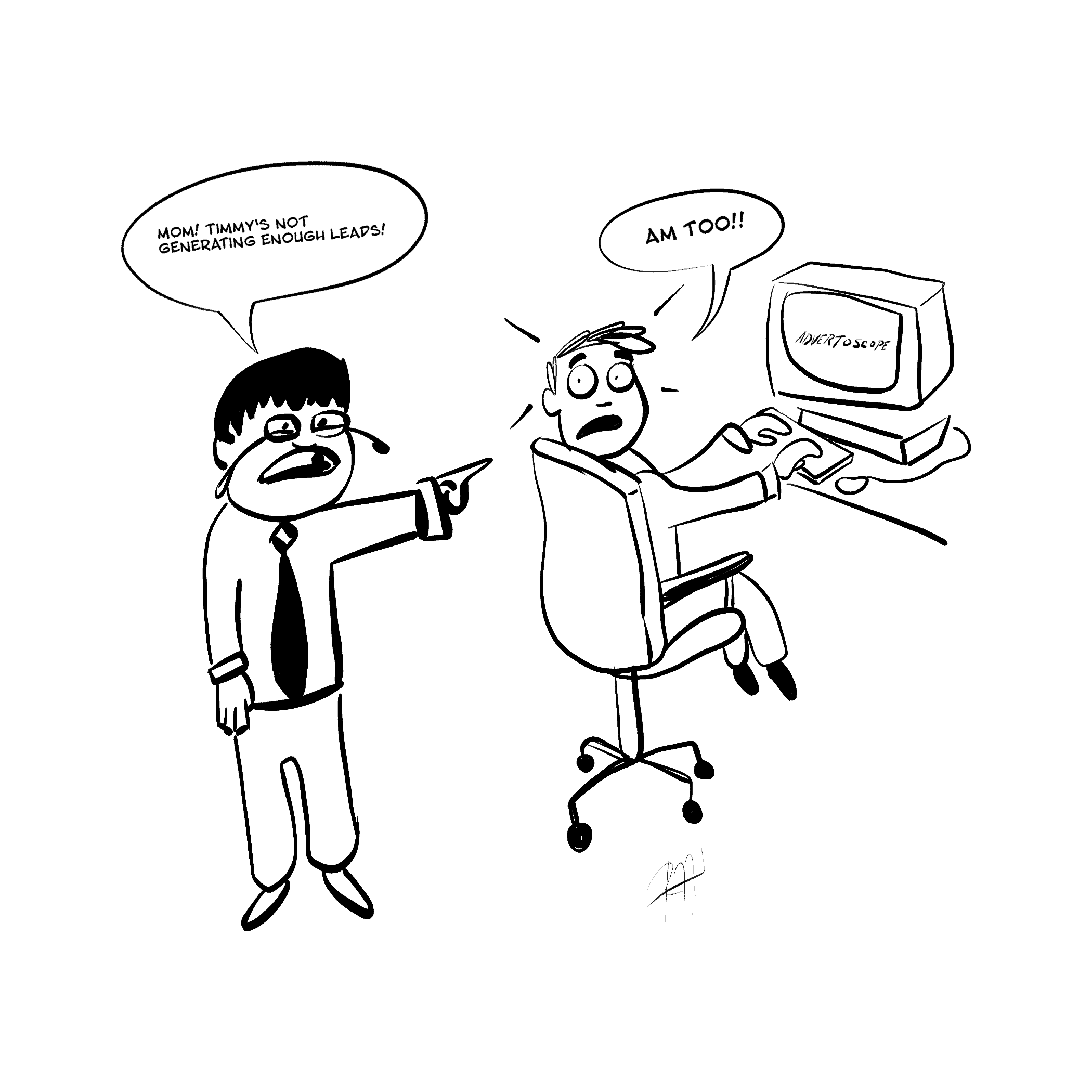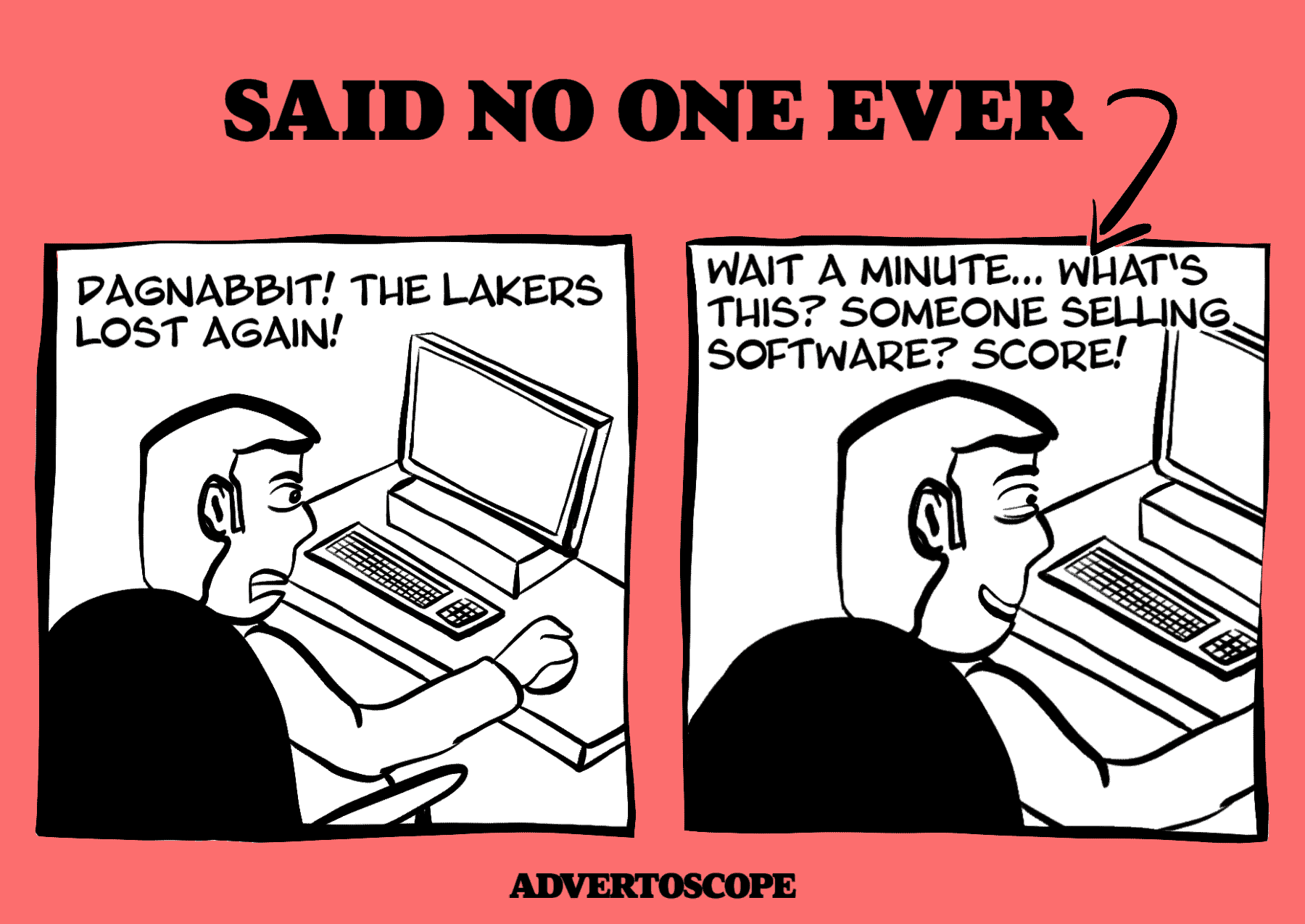Are you responsible for lead generation at a SaaS company that serves the human resources industry? If so, you probably know all about the back and forth between sales and marketing about HR leads. Sales says you’re not sending them quality leads, you say the leads are qualified and they aren’t doing enough to close them.

Here’s a SaaS marketing approach that will help you:
- Generate qualified HR leads
- Help your sales team close more leads
Where Do HR Leads Come From?
Well, Timmy, when a marketer loves his job very much—wait, no, scratch that. Let me start over.

Not all leads come from the internet. Offline lead generation is one way to generate HR leads, but I’ll be covering digital lead generation tactics in this article.
There are seven primary channels for generating leads online. I’ll call them the seven cogs in your lead generation machine because I think that sounds cool.
The 7 Cogs in Your Lead Gen Machine
I’m going to cover how to combine the following marketing strategies into an effective inbound sales funnel:
- Content marketing
- Email marketing
- Paid search
- Native advertising
- Display advertising
- Paid social
- Remarketing
Where Will You Find Them?
There are half a million HR people in the US and millions around the globe. Then there is an unknown but substantial number of people who aren’t technically in HR but perform HR-related functions. Of these millions of potential targets, some are decision makers, some are influencers, and some are users. The decision makers are the people who will ultimately decide whether or not to make a purchase. The influencers are the people who the decision makers listen to when considering a purchase. The users are the people who will actually use your product or service after a decision is made.
Each group is important, but how do you reach them?
If you have the budget, I recommend a full funnel approach that includes the seven cogs listed above.
Content Marketing
Most successful lead generation campaigns start with a compelling lead magnet. As buyers move down the funnel free trials and demos are great. But just because someone isn’t ready to buy doesn’t mean you don’t want them in your funnel. So you’ll want to create top- and mid-funnel content that will appeal to people who aren’t considering a purchase yet.
This content should be informative or entertaining, and it can be delivered in formats like:
- Blog posts. Don’t ignore this format just because these won’t directly generate leads. It’s great for SEO, which means it will bring traffic to your website. That means you can sell them on a lead magnet once they’re finished with the post (or at the beginning) and, even if they don’t convert, you’ll have a bigger audience to target with remarketing. Focus on quality and quantity. Hire a content marketing agency if you need help and you have the budget.
- Virtual events. At the top of the funnel, virtual events like webinars and virtual happy hours should be focused on helping and entertaining customers and potential customers, not selling your product. The goal is customer engagement. Trust me, the work you do here will make things easier on sales. Try to partner with a non-competing company or influencer in your industry, especially if you don’t have an existing audience or a substantial customer base.
- Resources. Online courses, tutorials, and other resources are more likely to generate backlinks and repeat traffic from customers and potential customers.
Email Marketing
Email marketing is one of the surest ways to reach your audience because everyone has an email and there’s no gatekeeper or third-party algorithm to determine whether a subscriber receives your message (as long as it doesn’t go to spam).
But remember: you want to generate engagement. It’s not time to sell your product yet.
A company newsletter is a no-brainer. I’ve found that a simple roundup of useful and interesting links from the company’s blog and other websites around the web is highly effective. You can put some bottom-of-funnel links in your header (e.g., links to your features, pricing, and demo request pages) and promotional content below the fold.
You can also use marketing automation to send specific emails based on a subscriber’s behavior on your website.
Native Advertising and Paid Search
So now you’ve got all this great content and no one’s seeing it. You’ve built out lead nurturing workflows but you don’t have anyone enrolled in them. Native advertising and paid search can solve those problems by driving traffic to your content and promoting your offers to the right audience.
Paid search is pretty straightforward. People search for answers to questions related to your product or service on a regular basis. Now, you can promote your content with Google Ads to send those people to your website.
Native advertising is a little different. These ads fit into existing content as though they were just more articles to fill the time your audience has to browse the web in between real work. Depending on which placements you target, people might see these ads on sites that are relevant to what you do (e.g., industry news sites) or sites that have nothing to do with your industry (e.g., ESPN).
To capture their interest and keep their attention, you’ll need compelling content that isn’t overly promotional.

What’s Your Message?
Your messaging should be align with each lead’s stage in the buyer’s journey. That means you’ll need to segment your audience based on which stage of the customer journey the audience members are in.
There’s the tippy top of the funnel, which you’ll fill with people who are in your target market but aren’t anywhere close to considering a solution like the one you offer. Here, you’ll cover broad topics of interest to generate brand awareness and begin establishing your credibility in the industry.
Then there’s the Awareness stage. This is still top-of-funnel, but now they are aware of the problem. This is where you’ll begin to share content related to the problem. Content that focuses on the consequences of inaction is useful because it can spur readers to move into the next stage of the funnel so as to avoid those consquences.
As your audience enters the middle of the funnel, or the Consideration stage, they’re now considering ways to solve the problem. They may be researching your company, competiting companies, and other solutions that are completely different from anything you or your competitors offer.
At this point, you’ll want to share content that educates them on all of the different solutions to their problem, with subtle nudges towards your solution. Then, finally, in the Decision stage, they’ve decided they want a solution like yours, and you have to convince them that yours is the best.
How Will You Deliver Your Message?
Each channel is useful at each stage of the funnel in different ways, but some are best suited to one or two stages. Here are some of the best channels for each stage of the funnel.
Top of the Funnel
At the top of the funnel, you’re looking to generate brand awareness and get eyeballs on your content. Here are the channels that are best suited to do that:
- Email Retargeting
- Native Advertising
- Paid Social
- Display Advertising
- Paid Search
Middle of the Funnel
At the middle of the funnel, you’re looking to find out who in your audience has moved into the next stage of the funnel and identify anyone in the Consideration stage who isn’t already in your audience. As I said, all channels can be effective here, but if your budget is limited, I recommend focusing on:
- Remarketing
- Email Retargeting
- Paid Search
Bottom of the Funnel
At the bottom of the funnel, you want to make sure that people who are ready to buy remember you and buy from you. Two of the best ways to do that are with paid search and remarketing. Remarketing will keep your company top of mind. Paid search will make sure that anyone who’s searching for keywords that demonstrate purchase intent find your company (whether or not they’re already in your audience).
HR Leads on Tap
If you implement this basic framework, you’ll have HR leads on tap. You’ll consistently fill the top of your funnel with new prospects, and your marketing efforts will generate and capture demand as it emerges within your target market. Let me know if you have any questions.

Leave A Comment